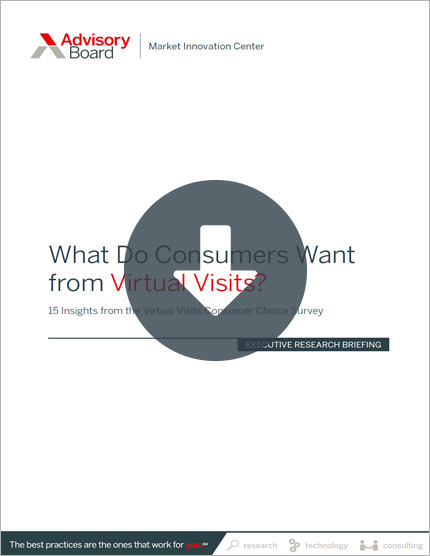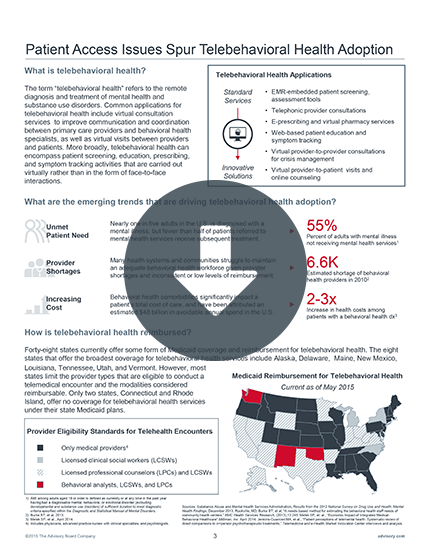Auto logout in seconds.
Continue LogoutA growing number of primary care doctors are replacing in-person specialist consults with electronic consultations (eConsults)—a practice that can "free up capacity in crowded health systems" and reduce wait times for other patients, Austin Frakt writes for the New York Times' "The Upshot."
Webconference Tuesday: Telehealth market trends for 2019
Where eConsults come in
Frakt—a health economist who holds positions at the Department of Veterans Affairs, Boston University's School of Public Health, and the Harvard T.H. Chan School of Public Health—explains that traditionally, primary care physicians refer patients to a specialist for an in-office appointment. But he notes, research has shown more than 40% of referrals are unnecessary.
With eConsults, "when a question arises that your primary care doctor can't answer without advice from a specialist—whether an MRI for knee pain is warranted, for example, … [your doctor] messages a specialist reviewer for help," Frakt writes. The reviewer then communicates with the doctor over a virtual secure connection to find out if the questions can be answered without a specialist visit, and "often it can be," Frakt writes.
eConsults reduce specialist wait times
Research suggests that eConsults do in fact prevent unnecessary specialist referrals, which can be particularly beneficial for rural patients who must travel long distances to see a specialist, Medicaid beneficiaries who may struggle to find an appointment, and uninsured patients who'd have to pay more out-of-pocket for the visit, Frakt writes.
For example, Frakt cites the Los Angeles County Department of Health Services, which saw patient wait times for specialties fall by an average of 17% three years after the public health system started using eConsults in 2012. In addition, the proportion of appointments scheduled within 30 days increased from 24% to 30%, and a quarter of eConsults did not result in a referral at all, according to a study published in Health Affairs.
Similarly, Frakt writes, the San Francisco Department of Public Health—which became the first U.S. system to adopt eConsults in 2005—saw "wait times [fall], and a large majority of primary care doctors said it improved care."
Mitchell Katz, director of the San Francisco Department of Public Health during the rollout of eConsults, said, "A safety-net system can't afford to hire enough specialists to meet demand—eConsults get around that problem by increasing access through enhancing efficiency."
Primary care doctors and patients love eConsults, but some specialists are wary
In addition, to reducing wait times and easing the demand on specialists, Frakt writes eConsults generally score positive reviews among patients, primary care providers, and specialists.
That said, eConsults aren't without their detractors.
One study found that 26% of specialists were dissatisfied with eConsultants due to "unclear clinical questions and the possible liability associated with providing medical advice for patients they hadn't examined," Frakt writes.
Another possible downfall to eConsults for specialists, according to Michael Barnett, an assistant professor of health policy and management at the Harvard T.H. Chan School of Public Health who conducted research eConsults, "is that over time specialist reviewers might become less engaged and route more patients to specialist visits to save time." He added, "If that happens, the resource-saving benefits of eConsults would fall."
How eConsults affect costs
As for the price of bringing eConsults to providers, the system is "less expensive than in-person visits, but they aren't without cost," Frakt writes. Patients don't pay for eConsults like they do in-person visits, but someone still has to respond to primary care physicians' inquiries. Some insurers and public programs like Medicare compensate physicians for eConsults, but there are still others that do not.
While eConsults "soun[d] like a great deal" for patients, eConsults could eventually increase health care spending by increasing the volume of patients being seen, Frakt concedes. But, he writes, "that may be money well spent if they contribute to better health, something that has not yet been documented" (Frakt, "The Upshot," New York Times, 3/18).
Webconference Tuesday: Telehealth market trends for 2019
With the majority of providers now embracing telehealth, many hospitals and health systems are looking to deepen program impact and scale their virtual care services.
Join the webconference Tuesday, April 2 at 1 pm ET to learn the latest updates to the telehealth industry and learn how policy, community partnerships, technology, and the patient demand for services are shaping the future virtual care landscape.
Don't miss out on the latest Advisory Board insights
Create your free account to access 1 resource, including the latest research and webinars.
Want access without creating an account?
You have 1 free members-only resource remaining this month.
1 free members-only resources remaining
1 free members-only resources remaining
You've reached your limit of free insights
Become a member to access all of Advisory Board's resources, events, and experts
Never miss out on the latest innovative health care content tailored to you.
Benefits include:
You've reached your limit of free insights
Become a member to access all of Advisory Board's resources, events, and experts
Never miss out on the latest innovative health care content tailored to you.
Benefits include:
This content is available through your Curated Research partnership with Advisory Board. Click on ‘view this resource’ to read the full piece
Email ask@advisory.com to learn more
Click on ‘Become a Member’ to learn about the benefits of a Full-Access partnership with Advisory Board
Never miss out on the latest innovative health care content tailored to you.
Benefits Include:
This is for members only. Learn more.
Click on ‘Become a Member’ to learn about the benefits of a Full-Access partnership with Advisory Board
Never miss out on the latest innovative health care content tailored to you.


